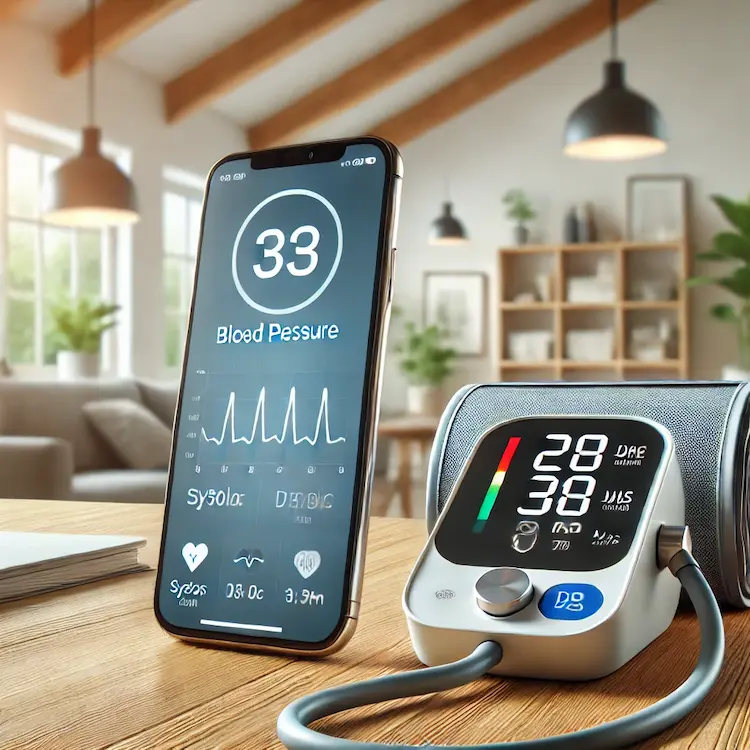Monitoring blood pressure is crucial for managing hypertension and preventing cardiovascular diseases. With the advent of technology, blood pressure monitoring apps have become increasingly popular, offering convenience and real-time data tracking. However, it’s essential to understand both the benefits and drawbacks of these applications, especially in the context of the Philippines.
Importance of Blood Pressure Monitoring
Hypertension is a leading cause of mortality worldwide, and the Philippines is no exception. Regular monitoring allows for early detection of blood pressure fluctuations, enabling timely interventions and reducing the risk of complications such as stroke and heart disease. Traditional methods involve manual measurements using sphygmomanometers, but digital solutions are gaining traction.

Benefits of Blood Pressure Monitoring Apps
- Convenience and Accessibility: Smartphone applications provide users with the ability to measure and record their blood pressure anytime, anywhere. This is particularly beneficial in remote areas of the Philippines, where access to healthcare facilities may be limited.
- Data Tracking and Analysis: These apps often come with features that track historical data, generate trends, and provide insights into blood pressure patterns. This continuous monitoring can aid healthcare providers in making informed decisions.
- Improved Patient Engagement: By providing real-time feedback, users are more likely to engage in their health management actively. A study indicated that using a mobile health app can empower patients to manage their health and increase adherence to hypertension treatment.
- Cost-Effectiveness: Utilizing apps can reduce the need for frequent clinic visits, saving time and resources for both patients and healthcare systems.
Drawbacks of Blood Pressure Monitoring Apps
- Accuracy Concerns: Not all apps are clinically validated, leading to potential inaccuracies in readings. This can result in false assurances or unnecessary anxiety.
- Technical Limitations: Factors such as improper arm positioning during measurement can lead to incorrect readings. A study highlighted that many patients and practitioners might be measuring blood pressure incorrectly due to improper arm positioning.
- Data Privacy Issues: Storing sensitive health data on apps raises concerns about data security and privacy, especially if the app developers do not adhere to strict data protection protocols.
- Dependence on Technology: Over-reliance on apps may lead individuals to neglect traditional monitoring methods or professional medical advice, which are crucial for comprehensive health management.
Blood Pressure Monitoring in the Philippines: Methods and Tools
In the Philippines, both traditional and digital methods are employed for blood pressure monitoring.
Traditional Methods
- Manual Sphygmomanometers: Considered the gold standard, these devices require proper training to use but offer high accuracy.
- Aneroid Devices: More portable than mercury devices but require regular calibration to maintain accuracy.
Digital Methods
- Automated Blood Pressure Monitors: These devices are user-friendly and provide quick readings. However, their accuracy can be affected by factors such as cuff size and arm position.
- Mobile Health Applications: Integrating Bluetooth-enabled devices with health apps allows for seamless data tracking and sharing with healthcare providers.
A study in the Philippines evaluated the effectiveness of Bluetooth remote monitoring devices combined with mobile medical clinics in managing blood pressure in low-resource areas. The findings suggested improved blood pressure control and better patient follow-up rates with the use of these technologies.
Practical Advice for Filipinos
- Choose Clinically Validated Apps: Opt for applications that have been tested and approved by health authorities to ensure accuracy.
- Maintain Proper Measurement Techniques: Ensure correct arm positioning and follow the app’s guidelines during measurements to obtain accurate readings.
- Regular Calibration: If using digital devices, have them calibrated periodically to maintain accuracy.
- Consult Healthcare Professionals: Use these apps as supplementary tools and continue regular consultations with healthcare providers for comprehensive management.
- Protect Personal Data: Be cautious about sharing personal health information and choose apps that prioritize data security.
Conclusion
Blood pressure monitoring apps offer a blend of convenience and advanced features that can significantly aid in managing hypertension, especially in regions like the Philippines. However, it’s essential to be aware of their limitations and use them as complementary tools alongside traditional methods and professional medical advice.
Key Takeaways:
- Blood pressure monitoring apps provide convenience and real-time data tracking.
- Accuracy and data privacy remain primary concerns.
- Combining traditional methods with digital tools offers a comprehensive approach to hypertension management.
Actionable Recommendations:
- Select apps that are clinically validated and prioritize data security.
- Adhere to proper measurement techniques to ensure accurate readings.
- Regularly consult with healthcare professionals to interpret data and adjust treatment plans accordingly.


